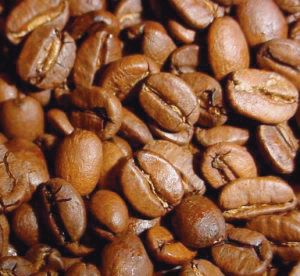There is a habit in Italy—and Florence is no exception—of talking about food while eating (“wonderful meals I’ve eaten” being a particularly frequent topic). And if you were to ask a Florentine how important food is in the grand scheme of life, chances are he’d look at you askance and respond with something along the lines of, “What do you mean? It is essentialas important as air and wateras sex and love.” In other words, so important that its importance is not even up for discussion.
Words like nostrale and genuino are music to the Florentine palate. Nostrale is a word you’ll see written in bold print on a scrap of cardboard alongside a basket of summer zucchini or pomodori. From nostro meaning “ours,” it means locally grown, and implicit in that label is the belief that it will be superior to anything else of its kind available on the market.
Florentines are not impressed by produce that has travelled from far away continents in another hemisphere. They have little desire to eat peaches in winter or porcini mushrooms foraged in foreign woods. They trust and take pleasure in the fruits of their own gentle hills and valleys, and they have an appreciation of the many gifts of each season—spring’s asparagus, artichokes, cherries, and strawberries; summer’s tomatoes, aubergines, melons, and plums; fall’s mushrooms, new olive oil, figs, and grapes; winter’s squash, black cabbage, persimmons, and chestnuts.
Autumn is the Florentine countryside at its most lushly abundant. First is la vendemmia,the grape harvest. The vineyards swarm with grape pickers and tractors ferrying grapes to be crushed, and there is a faint smell of must in the air after the pressing. While the ancient alchemy that turns grape juice into wine is at work, rickety wooden ladders are propped up against olive trees and wide nets spread below their branches for the olive harvest. Olio nuovo—freshly pressed olive oil—is the most eagerly awaited culinary event of the year, celebrated simply, as is the Tuscan way, by drenching toasted bread or creamy cannellini beans with the sharp fruity oil and endlessly comparing the merits of this year’s oil to last.
Genuinità refers to genuineness and authenticity and is more of a concept than a label. Bread leavened with natural yeast and baked in a wood burning oven is genuino,as is cheese from the milk of sheep that graze on wild Tuscan grasses, or the oil from your neighbour’s olives, picked by hand each fall and taken to the local mill to be pressed. Where there is genuinità, there are likely to be artigiani—the passionate, hardworking artisans whose abiding respect for tradition and the land keep alive such ancient crafts as the curing of meat and the making of cheese, wine, and bread.
Another benchmark of Florentine cooking is frugality. Theirs is not a mean, stingy, parsimony but a series of habits so ingrained in their culinary consciousness as to render the notion of frugality almost invisible. Beloved soups and salads are made from stale bread (ribollita, pappa al pomodoro and panzanella the most famous); beans are cooked in bakers’ cooling ovens once the bread making’s done; and the glimmering embers from potters’ kilns are used to bake peppery beef stews.
There is no question that the rhythms of modern life have crept into the city as they have everywhere else. Gone for the most part are the daily two-hour lunches replete with antipasto, primo, secondo, contorno, dolce,a generous carafe of vino and a piccola siesta to round the whole thing out. Nevertheless, the typical Florentine day—gastronomically speaking—has its well established paces, and they continue to do justice to that enviable notion of la bella vita: prima colazione,or breakfast, at the bar or at home, little more than a caffè latte or cappuccino and a bun; a second caffè at the bar mid-morning; at pranzo,or lunch, una minestra (a soup, Florentines being much more partial to them than the rest of the world imagines), una bella pastasciutta,or perhaps una fettina di carne (a wee slice of beef or pork) and un’insalata,or a piece of fruit (served on a plate and carefully peeled and sliced with a knife); the young and hip might stop at the bar for an aperitivo before cena,or dinner, (rarely drinking to the excess of other cultures best left unnamed). La cena has remained sacrosanct—whether at home with the family gathered around the table or al ristorante. It is without a doubt Florence at its most civilised.
A trattoria meal will almost always begin with a platter of affettati (cured meats) and crostini di fegato (chicken liver pâté crostini); followed by a primo (such as a bread soup or pasta with peas, zucchini, mushrooms, or any other seasonable vegetable); main courses are typically grilled meats (carne alla bracce), roasted meats like arista (pork roasted with rosemary and garlic), braised beef (straccotto), or chicken or rabbit fricasseed or dipped in batter and fried. The most common contorni,or side dishes, are sautéed spinach or chard, roasted potatoes, and insalata verde. After such a meal, dessert will most certainly be biscottini di Prato e vin santo, hard almond biscuits to dip in sweet, golden vin santo.





